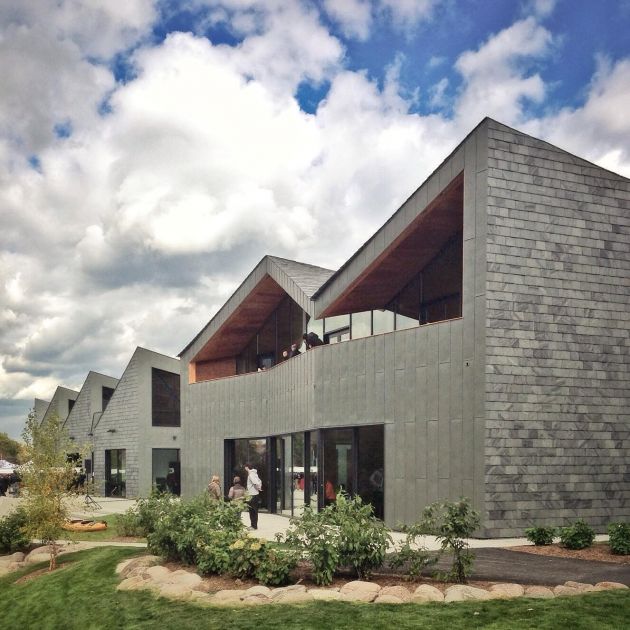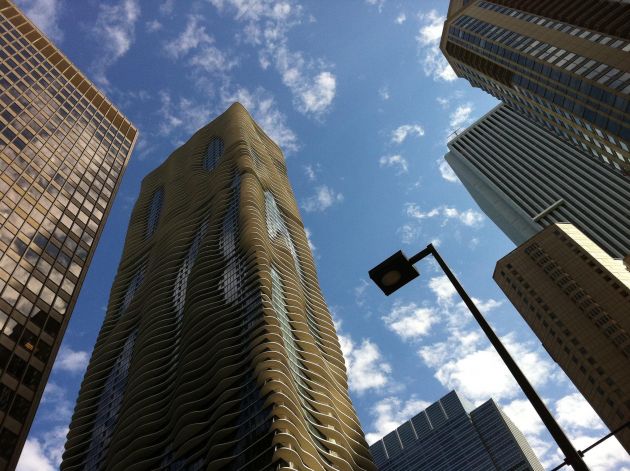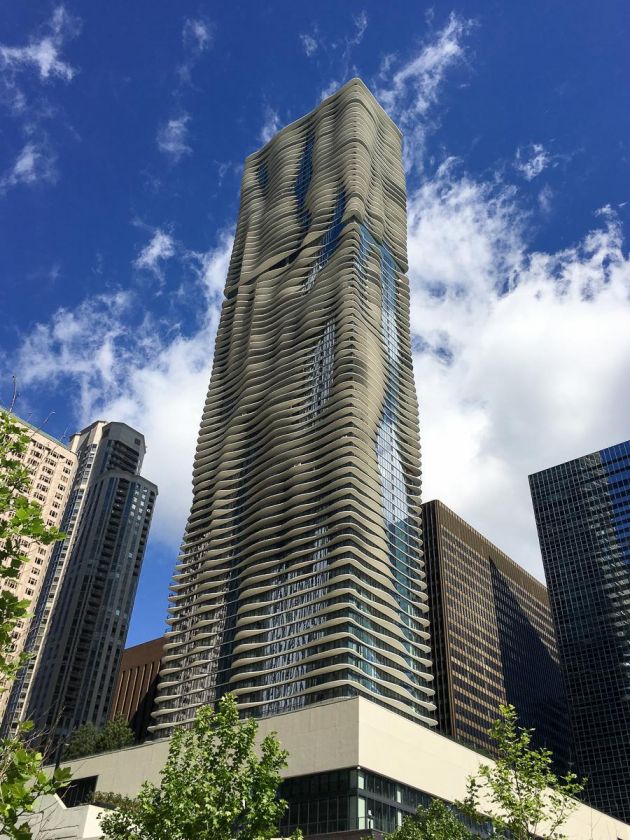 WMS Boathouse by Studio Gang. Photo by John Zacherle via Flickr
WMS Boathouse by Studio Gang. Photo by John Zacherle via Flickr
Perhaps best known for her record-breaking high Chicago towers, Jeanne Gang’s greatest impact is on street level. Her architecture focuses on the interactions between humans and the built environment
Chicago-based architect and MacArthur Fellow Jeanne Gang is the founding principal of Studio Gang. She is internationally renowned for work that looks at relationships between individuals, communities and the urban environments they occupy. Gang believes that every project has the potential to address social problems.
Her eponymous architecture and design practice, Studio Gang, was founded in the late 1990s and now has offices in Chicago and New York. The studio works towards using design to help elevate social and urban issues with innovative work and experimental ways of thinking.
 Aqua Tower by Studio Gang. Photo by Mashthetics via Flickr
Aqua Tower by Studio Gang. Photo by Mashthetics via Flickr
Among her most recognisable buildings are the WMS Boathouse and the Aqua Tower, both situated in Chicago. The iconic Aqua Tower is currently the tallest building ever designed by a woman at 82-storeys high. Vista Residences – currently under construction also in Chicago – is set to be even taller.
The Aqua Tower stands at 262 metres high and was completed in 2010. With its vast green roof and rippling concrete balconies, it quickly became a Chicago landmark. The facade is intended to suggest natural typographies such as hills, valleys and lakes that rise into the air. The uneven balconies are not purely aesthetic: they also serve an important engineering purpose by diffusing strong winds, enabling balconies to feature on every floor and on all four sides of the building.
 Aqua Tower by Studio Gang. Photo by Piet Theisohn
Aqua Tower by Studio Gang. Photo by Piet Theisohn
Gang and her studio have a tendency towards projects that address important social issues and help create more sustainable cities. The studio’s work often incorporates recycled materials and aims to help increase biodiversity within urban areas.
The WMS Boathouse has helped transform a polluted and neglected stretch of the Chicago River by creating public access to the river’s northern edge and supporting a revival of recreation on the water. It serves as a home for the Chicago Rowing Foundation.
Shaped to capture the motion and rhythm of rowing, the boathouse has a zigzagging roof that is both visually interesting and responds to the Chicago weather by allowing cooling airflow in summer and warming sunlight in the cold winter months.
 WMS Boathouse by Studio Gang. Photo by John Zacherle via Flickr
WMS Boathouse by Studio Gang. Photo by John Zacherle via Flickr
The Arcus Center for Social Justice Leadership, completed in 2014, is used to develop leaders in the field of human rights and social injustice. Gang and her team designed a building with interiors that offer a series of informal spaces for casual interactions that break down cultural and social barriers. These spaces aim to recreate the historical environments where meetings that addressed social injustices might have taken place: churches, living rooms and kitchens. The materials used were inexpensive and low tech and the whole project was built with a strong emphasis on environmental impact.
Studio Gang’s ongoing national project Polis Station looks at how architecture can change the relationship between the police force and the community they serve. By investigating and rethinking the architecture of policing, Gang is working towards using the police stations to create opportunities for a safer and healthier community.
The first Polis Station project is the transformation of a police station in Chicago’s North Lawndale, an area known for shootings, into a community hub for young people. Computer labs with free access were set up inside the station and a basketball court now fills the under-utilised space in the car park outside.
 Hyde Park by Studio Gang. Photo by John Zacherle via Flickr
Hyde Park by Studio Gang. Photo by John Zacherle via Flickr
Gang was born in Illinois, studied architecture at the University of Illinois and then went on to get a masters from the Harvard Graduate School of Design. She started her career in architect Rem Koolhaas’s OMA offices in Rotterdam, Netherlands before returning to America and founding Studio Gang in 1997.
Gang is a strong advocate for gender equality in the architecture world and has spoken out against wage discrepancies between employees of opposite sexes within large firms. At her own practice all employees are paid equally and fairly, which Gang advocates is the only way to promote an environment where respect exists and creativity can truly flourish.
At 55 years old, Gang’s work has earned her many awards: she received a 2013 National Design Award from the Cooper Hewitt, Smithsonian Design Museum, and was named the 2016 Architect of the Year by the Architectural Review. In 2017, she was made an honorary fellow of the Royal Architectural Institute of Canada and received the Louis I. Kahn Memorial Award. Just last year she was named in the TIME 100 most influential people list, the only female architect to make the cut.

















